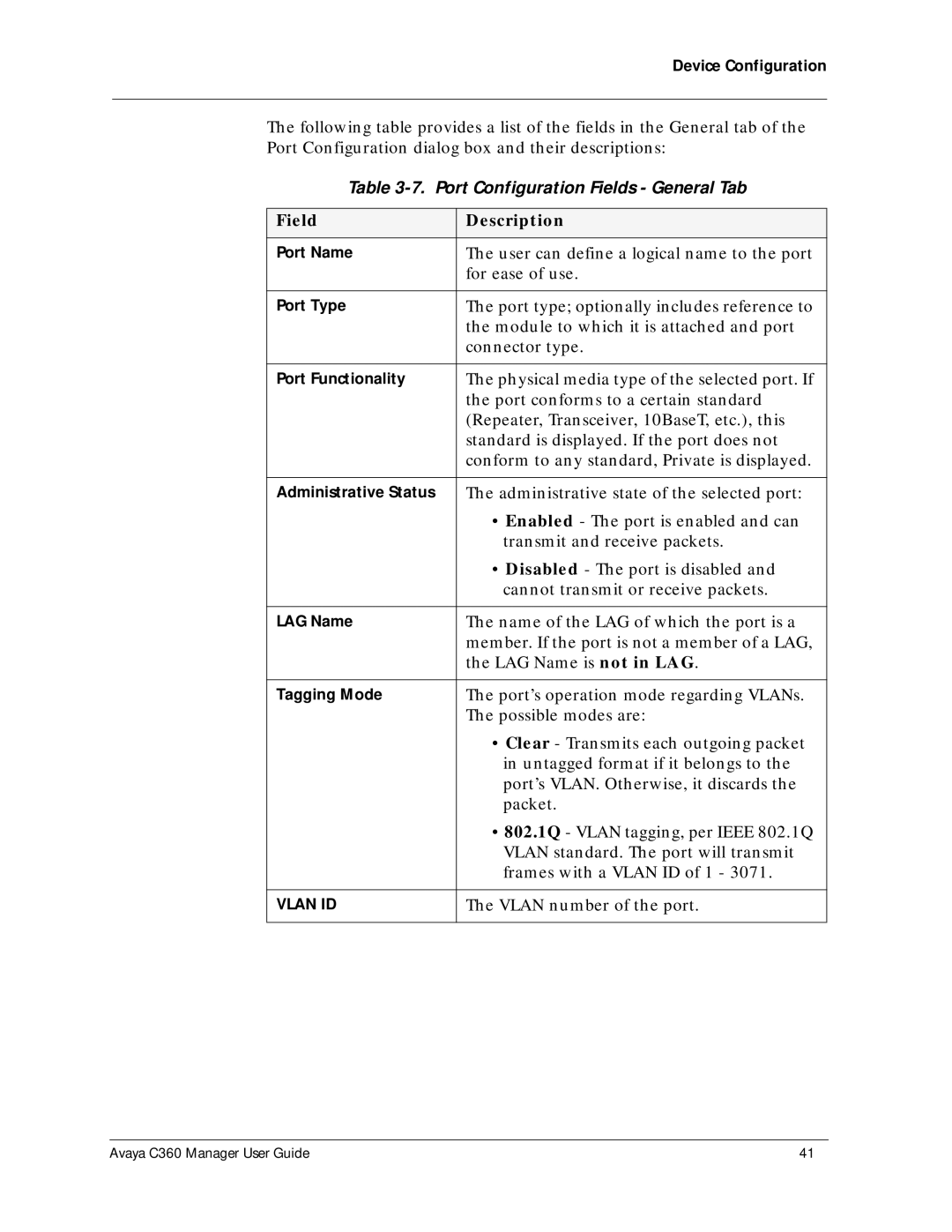
Device Configuration
The following table provides a list of the fields in the General tab of the Port Configuration dialog box and their descriptions:
Table 3-7. Port Configuration Fields - General Tab
Field | Description |
|
|
Port Name | The user can define a logical name to the port |
| for ease of use. |
|
|
Port Type | The port type; optionally includes reference to |
| the module to which it is attached and port |
| connector type. |
|
|
Port Functionality | The physical media type of the selected port. If |
| the port conforms to a certain standard |
| (Repeater, Transceiver, 10BaseT, etc.), this |
| standard is displayed. If the port does not |
| conform to any standard, Private is displayed. |
|
|
Administrative Status | The administrative state of the selected port: |
| • Enabled - The port is enabled and can |
| transmit and receive packets. |
| • Disabled - The port is disabled and |
| cannot transmit or receive packets. |
|
|
LAG Name | The name of the LAG of which the port is a |
| member. If the port is not a member of a LAG, |
| the LAG Name is not in LAG. |
|
|
Tagging Mode | The port’s operation mode regarding VLANs. |
| The possible modes are: |
| • Clear - Transmits each outgoing packet |
| in untagged format if it belongs to the |
| port’s VLAN. Otherwise, it discards the |
| packet. |
| • 802.1Q - VLAN tagging, per IEEE 802.1Q |
| VLAN standard. The port will transmit |
| frames with a VLAN ID of 1 - 3071. |
|
|
VLAN ID | The VLAN number of the port. |
|
|
Avaya C360 Manager User Guide | 41 |
